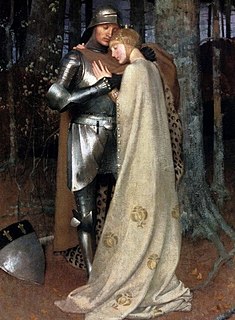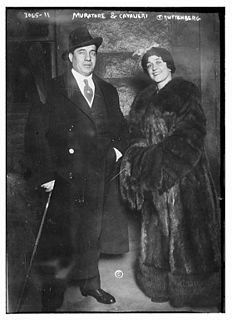Aucassin et Nicolette is a shadow puppet opera in a prologue and three acts by Paul Le Flem after the medieval "chantefable " Aucassin et Nicolette .

Opera is a form of theatre in which music has a leading role and the parts are taken by singers, but is distinct from musical theater. Such a "work" is typically a collaboration between a composer and a librettist and incorporates a number of the performing arts, such as acting, scenery, costume, and sometimes dance or ballet. The performance is typically given in an opera house, accompanied by an orchestra or smaller musical ensemble, which since the early 19th century has been led by a conductor.

Paul Le Flem was a French composer and music critic.
The music was first presented in private at the home of Pierre Aubry on 19 May 1909, then given a first public performance with medieval themed "ombres" – Chinese shadows – by Géo Dorival on 11 February 1910. [1] The music was not presented as a fully staged opera until 1924 at the Théâtre Bériza, with Marguerite Bériza herself singing Nicolette and costumes by Ladislas Medgyes.
Pierre Aubry is a Canadian former professional ice hockey left winger who played five seasons in the National Hockey League for the Quebec Nordiques and Detroit Red Wings from 1980–81 to 1984–85.
Justin Marie Georges Dorival was a French poster artist. He also made glass plates for shadow puppet theatres, such as the 1910 premiere of Aucassin et Nicolette.

Marguerite Bériza was a French opera singer who had an active international career during the first half of the 20th century. She began her career as a mezzo-soprano at the Opéra-Comique in 1900; ultimately transitioning into the leading soprano repertoire at that theatre in 1912. She performed extensively in the United States from 1914–1917 and was also heard as a guest artist at theatres in the French provinces, Monaco, Portugal, and Switzerland during her career. In 1924 she founded her own opera company in Paris with whom she actively performed up until 1930.
In Le Flem's music, the medieval theme is complemented by references to Breton music. [2]








